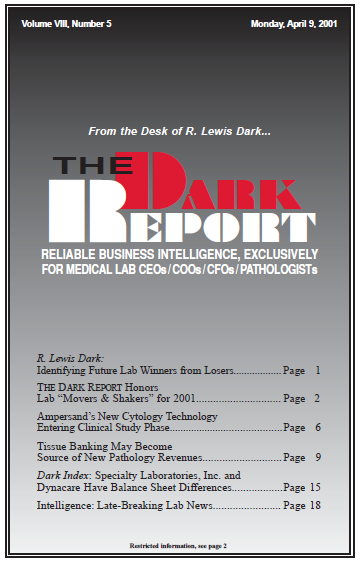CEO SUMMARY: Evidence is accumulating that tissue banking may be where the “rubber meets the road;” where pharma money funds technology enhancements that directly benefit the profession of pathology. Without question, the need by pharma, biotech, and genomic companies to access, analyze and understand the tissue of targeted subpopulations is creating an opportunity for savvy …
Tissue Banking May Be Source Of New Pathology Revenues Read More »
To access this post, you must purchase The Dark Report.


